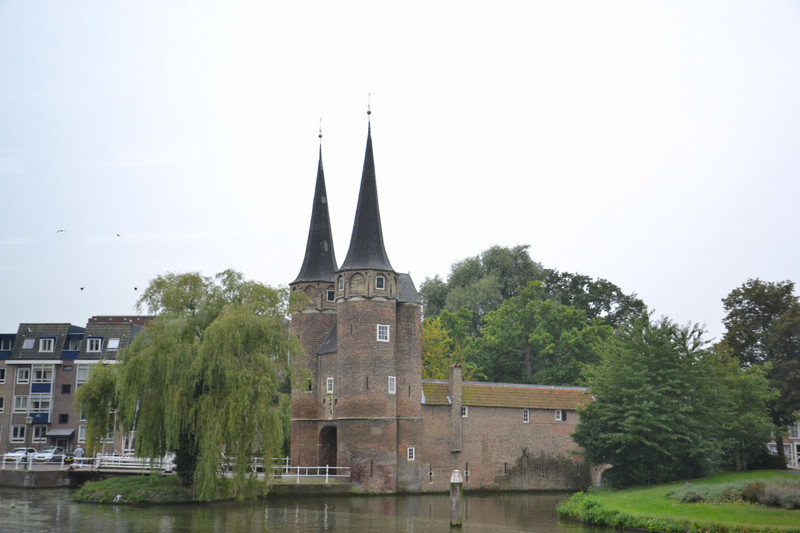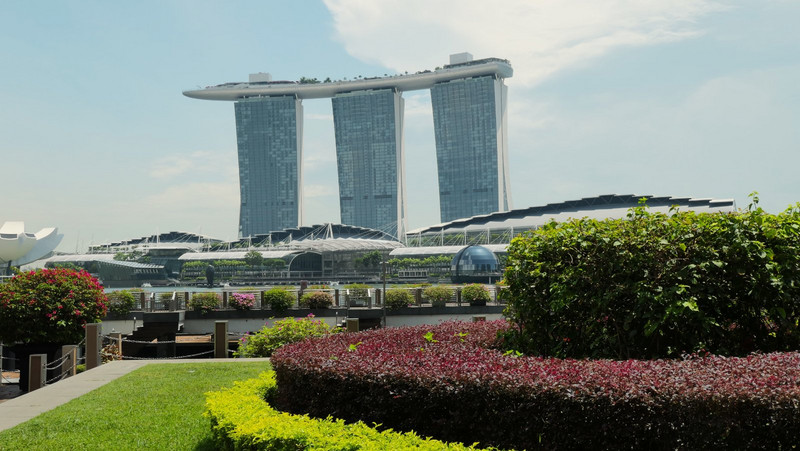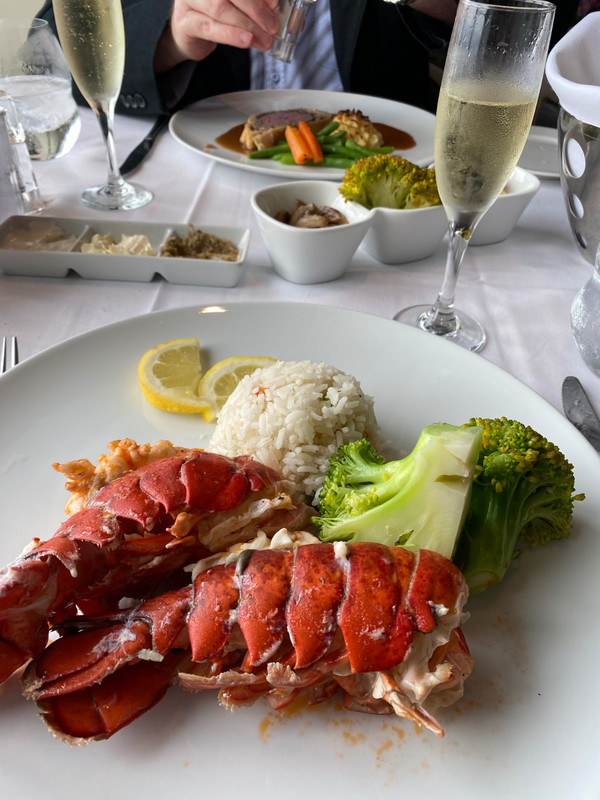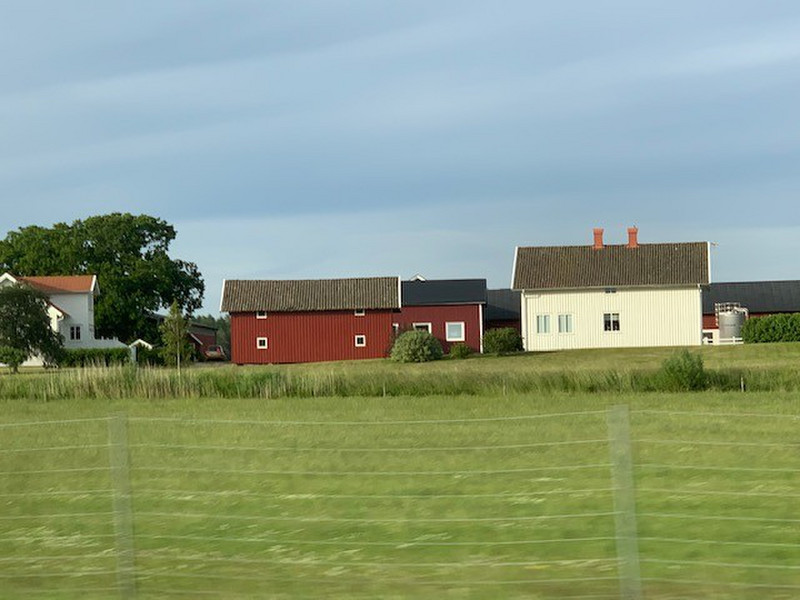To me the word Delft immediately brings to mind images of the famous blue and white earthenware. Royal Delft was our tours destination. Arriving in Delft, we stopped at an industrial building named De Porceleyne Fles (The Porcelain Jar). It is the home and manufactory of Royal Delft. The building also contains the Royal Delft Museum. Manufacture of Delft earthenware began in the early 17th century inspired by imported Chinese Blue and White porcelain. A tour of the premises began with the Delft workshop where craftsmen were forming the pieces from clay, preparing them for painting, painting designs on the formed pieces and then glazing and firing them. (We sort of saw the process in reverse order.) The museum displays Delftware pieces old and new including a reproduction of Rembrandts Night Watch in Delft tiles. Of course, there was also the opportunity to purchase Delftware.
After visiting Royal Delft, the tour headed for downtown Delft and its market square. There was free time here to have lunch and explore. The Grand Cafe Willem van Oranje looked like a likely spot for lunch. It has a perfect location on Delfts Market Square (Groote Markt) with view of the Nieuwe Kerk
at one end and the Stadhuis at the other. We sat outside in very pleasant weather. The multilingual menu displayed all sorts of temping offerings from sandwiches to salads. My attention was caught by the Dutch pancakes (Pannekoeken). I had to try one and ordered a Ham and Cheese pancake. It was wonderful! When it arrived it looked for all the world like a pizza. But it was definitely a pancake cooked with ham and cheese on top. (The pancake was more on the order of a large crpe than what I think of as pancake, and was really good.)
The Nieuwe Kerk, or New Church, on Delfts market square is a towering Gothic church built between 1396 and 1496. It was the second parish church in Delft, hence the name New Church. Originally a Catholic church dedicated to St. Ursula, it became a Protestant church in the 16th Century during the Reformation. The was the first church we had the opportunity to visit in The Netherlands. (An admission fee included both the Nieuwe Kerk and the Oude Kerk.) The interior is Gothic in design, majestic, but very plain and unadorned. (The Iconoclast movement in the 16th century removed
the Catholic statuary and decoration.) The focus of Reformed worship is the wooden pulpit in the centre of the Nave. A pipe organ installed in 1839 is in the organ loft. The organist was rehearsing while we were here, adding to the experience. The most striking feature of the interior is the Mausoleum of William of Orange, located in the Choir. At first, one might think it is a highly decorated altar. But it is a monument to, and resting place of, William of Orange He is considered to be the founder of the Netherlands, as he led resistance again Spanish rule. He was assassinated in Delft and his body brought to the Nieuwe Kerk. The States General of the United the memorial, designed by Hendrick de Keyser in 1621. It is in black and white marble, with five bronze figures. Williams sarcophagus is in the center, covered by a canopy with four corner figures representing Liberty, Justice, Religion and Valour. A winged figure with a trumpet stands on one foot at the rear. I was most struck by the figure of Liberty. She holds a hat with the inscription Aurea Libertas (Golden Liberty). I
believe it is William of Oranges hat. It looks something like a cowboy hat. I realized that photos I had seen of Dutch people wearing what looked like orange cowboy hats were not that at all. They are William of Orange hats!
Members are the Dutch royal family since William of Orange are buried in the Royal Crypt below the church. The Royal Crypt is not open to the public, but an interpretive display describes its layout and those buried there. (The most recent interment was Queen Juliana in 2004.) The stained glass windows were installed in the century.









